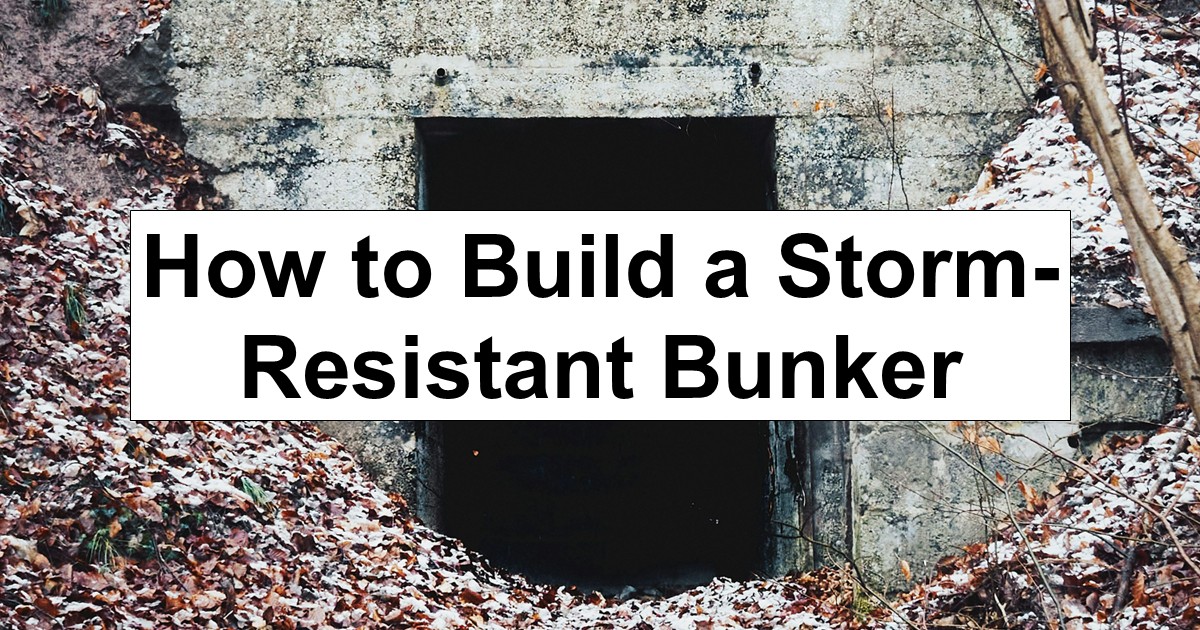Volatile weather events and natural disasters can strike at any moment, making them critical to plan and prepare for. Some areas get hit much harder than others, leaving you and your loved ones vulnerable.
Building a storm-resistant bunker can help you navigate and survive these unexpected storms.
Why Should You Build a Storm Shelter?
From 1980 to 2024, the United States experienced 403 weather and climate-related disasters, each exceeding $1 billion in damages. 2024 was the fourth-costliest ever recorded, costing a cumulative $182.7 billion and leading to 568 direct and indirect fatalities.
According to a Moneywise analysis, Texas is the most disaster-prone state, with 368 events since 1953, including hurricanes, floods, fires and winter storms. California, Oklahoma, Washington and Florida follow suit, experiencing frequent wildfires, tornadoes and hurricanes.
Furthermore, critical agencies like the National Oceanic and Atmospheric Administration and the National Weather Service (NWS) endure staffing and budget cuts. The NWS recently stated it would cease twice-daily weather balloon launches in Nebraska and South Dakota, posing a widespread safety issue without accurate meteorological data to relay to the public.
If you live in an area impacted by severe weather, a storm shelter can reduce your risk of injury or death. Storm-resistant bunkers use strong materials to withstand high winds, flying debris and structural failure. This can also protect you and your family from a sudden disaster in which you can’t reach a community shelter in time. Overall, it is a one-time investment, offering protection and peace of mind.
A Guide to Building a Storm Bunker for Safety
If your region regularly experiences disasters, building a storm-resistant bunker is a good idea. These structures could be the key to saving your life when unexpected weather strikes. While it is wise to have professionals build a safe space to ensure it complies with federal codes, you can also make one yourself.
Materials Needed
Proper material selection is critical with a do-it-yourself storm shelter. Your best options are reinforced concrete, fiberglass, and a combination of wood and steel, which are lightweight but less likely to crack or leak. You’ll also need various equipment and tools, including an excavator, backhoe tractor and concrete pump.
Renting equipment instead of buying it can save you money. Ultimately, the exact machinery, tools and hardware you’ll need depends on the type of bunker you intend to construct and its location.
Location Considerations
The Federal Emergency Management Agency (FEMA) says safe rooms can be in-ground or aboveground. However, aboveground structures must undergo rigorous testing and meet stringent safety requirements. Likewise, a bunker might be part of your home’s footprint or detached next to the building.
While you can convert your basement into a safety shelter to protect your household members from tornadoes, you must ensure it stays completely dry during heavy precipitation and flood events. This means reinforcing walls and replacing windows and doors with impenetrable materials. It’s also essential to keep it far away from your septic system, which you should pump at least every three years or drain before each storm season.
Studies suggest that if people cannot mitigate climate change, the U.S. will experience a 26% increase in flood events by 2050, making it even more critical to consider your bunker’s location.
Meanwhile, the National Storm Shelter Association says tornado shelters should be no more than 150 feet from your home and away from large trees, power poles and lines, and other nearby structures.
Optimal Design
When designing a storm-resistant shelter, you should expect to stay inside for two hours during a tornado and about 24 hours during a hurricane. As such, it is crucial to design the bunker with the following in mind:
- Enough space for occupants to sleep and move around
- Toilet facilities and proper water and waste treatment
- Food preparation facilities for extended use durations
- Emergency power supply for communication, lighting and ventilation systems
- Accessibility for people with wheelchairs or other mobility devices
The entire structure, from the roof to the walls and the foundation, must be built to withstand a storm’s force. Any weak spots could cause the shelter to break. Also, while basement walls are not in the wind stream of a volatile storm or tornado, they must be able to resist soil pressure and moisture.
What Should You Include in Your Bunker?
To fully prepare for a disaster, you should fill your bunker with a supply kit of essential items, such as an ample water supply — about 1 gallon per person for several days — and nonperishable food. Other emergency supplies include:
- Flashlights with extra batteries
- Battery-powered radio
- Whistle
- First-aid kit with nonprescription medications
- Sleeping bags or blankets
- Pet food and extra water
- Baby items, including formula, diapers and wipes, if necessary
- Hand sanitizer and disinfectant wipes
- Personal hygiene and feminine hygiene products
- Important documents
- Books, paper and pens, and other entertainment items
Protect items in plastic bags and tightly sealed containers. Also, regularly check expiration dates and replace things as needed.
Protect Yourself During the Worst Storms
When a natural disaster strikes, your safety should be your top priority. A storm-resistant bunker will allow you to hide out in a secure area until the worst of the event passes. If you live in an area prone to severe weather or flooding, preparing yourself with a solidly constructed structure is best.
[Note: This was a guest post.]

Leave a Reply